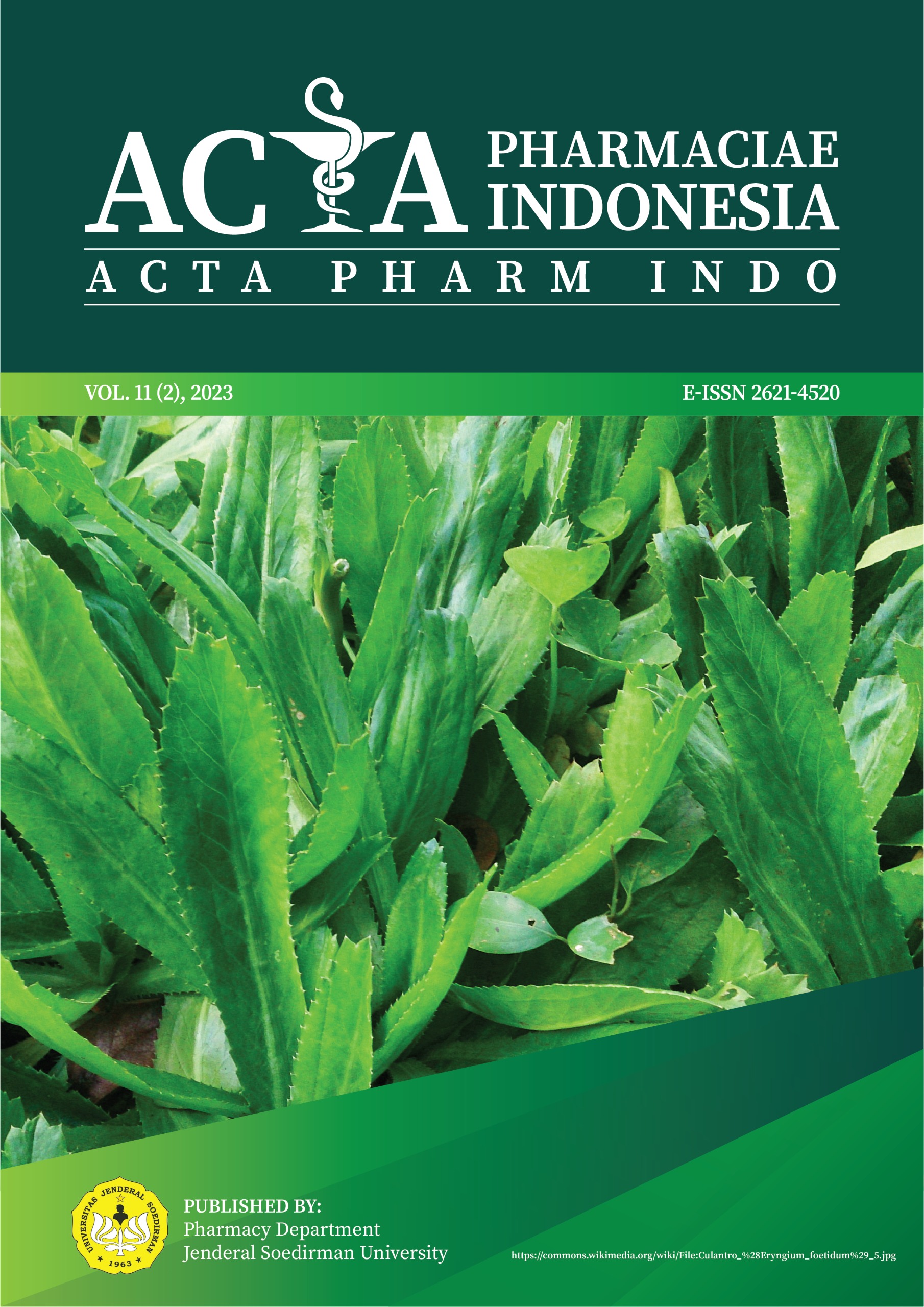Biolarvicide activity of extract and essential oil of culantro (Eryngium foetidum L.) on Culex quinquefasciatus larvae in silico and in vitro
Abstract
Background: Filariasis, a priority tropical disease in Indonesia, is transmitted by the Culex quinquefasciatus mosquito. The use of conventional synthetic larvicides can lead to environmental and health issues, including poisoning and resistance in target insect populations.
Objective: This study explores the utilization of biolarvicides derived from culantro (Eryngium foetidum) to mitigate these adverse efects, focusing on analyzing the components and evaluating the larvicidal eficacy of both the extract and essential oil of E. foetidum.
Method: This study employed a molecular docking approach to examine in silico biolarvicidal activity against the odorant binding protein (OBP) receptor and conducted in vitro experiments on Cx. quinquefasciatus larvae using varying concentrations of E. foetidum extract (100, 250, and 500 ppm) and essential oil (10, 50, and 100 ppm).
Results: The in silico study identified hynokiflavone and longifenaldehyde as the compounds with the most potent activity, demonstrating binding a inities of -10.2 and -9.5 kcal/mol, respectively. The in vitro assays revealed that the E. foetidum extract achieved 75% larval mortality at an LC50 of 78.59 ppm, while the essential oil resulted in 88% mortality with an LC50 of 10.13 ppm.
Conclusion:The extract and essential oil of E. foetidum exhibit significant biolarvicidal activity against Culex quinquefasciatus, offering promising plant-based alternatives to traditional larvicides, with implications for safer and more sustainable vector control strategies.

This work is licensed under a Creative Commons Attribution 4.0 International License.











